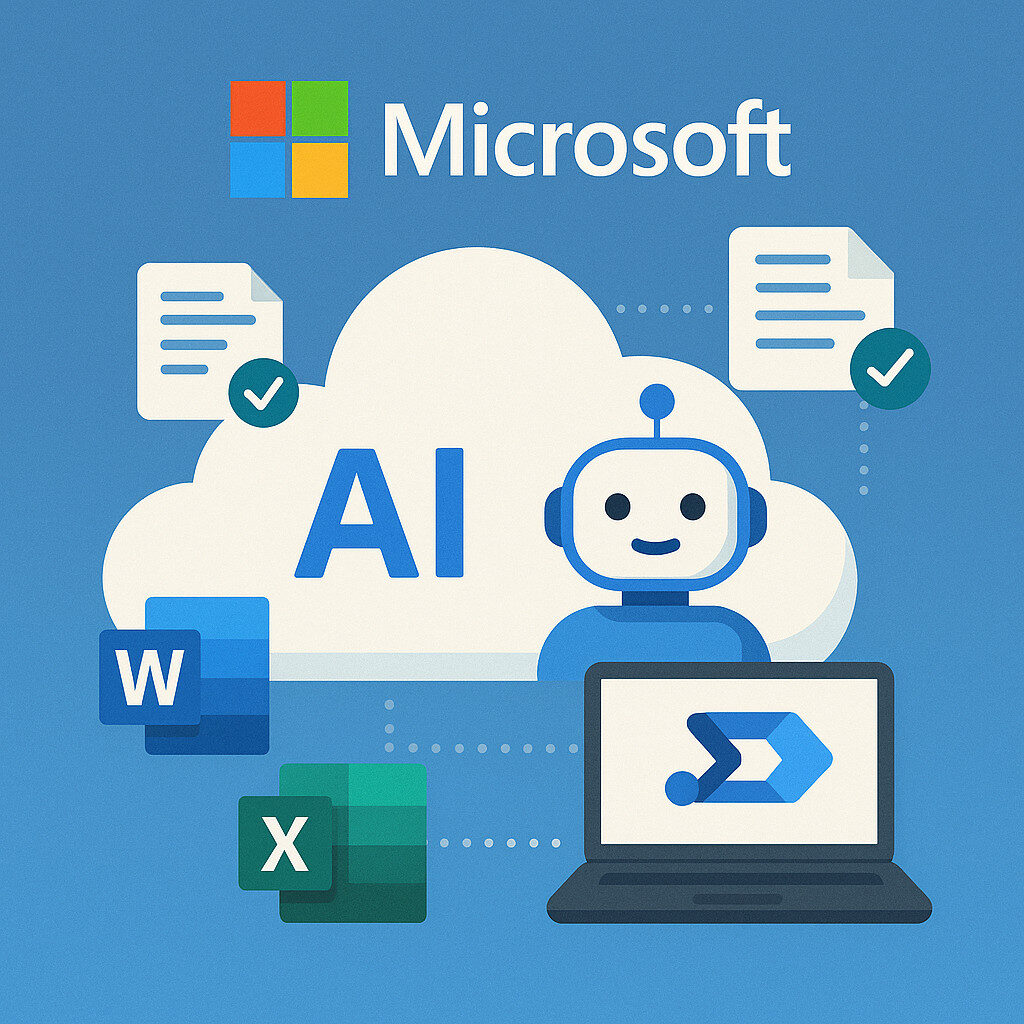

As I continue my #30YearsInIT series, I want to take a moment to explore one of the most pivotal advancements in enterprise technology – Microsoft 365. For businesses unfamiliar with Microsoft 365, or those wondering if the platform could be the answer to modernising their IT infrastructure, this is for you. This post dives into what Microsoft 365 offers and why it has become a cornerstone of productivity for millions of organisations worldwide.

The shift towards cloud computing has been transformative for organisations of all sizes. Microsoft 365, launched as the evolution of Office 365, has become synonymous with this change – bringing powerful applications, security features, and collaboration capabilities to organisations across the globe without the need for traditional on-premises infrastructure. Microsoft 365 is more than just Office in the cloud; it is an interlinked ecosystem that enhances productivity, improves communication, and simplifies IT management in a way that was unimaginable just a decade ago.
At its core, Microsoft 365 is a subscription-based suite of tools and services designed to drive productivity and collaboration across your organisation. It includes familiar applications like Word, Excel, PowerPoint, and Outlook, which have all evolved to take full advantage of cloud integration. But beyond these core apps, Microsoft 365 is a fully integrated platform that also features Teams, OneDrive, SharePoint, and many other tools each playing a role in creating a seamless digital workspace.
For organisations considering moving away from on-premises systems or other cloud platforms, Microsoft 365 provides several compelling advantages:
For many organisations, the shift from on-premises solutions to Microsoft 365 is about more than just cost savings, it is about enabling growth, improving flexibility, and being prepared for the future. Compared to maintaining a complex, on-premises IT infrastructure, Microsoft 365 offers an operational expenditure model with predictable monthly or yearly costs, which can be especially attractive to small and medium-sized businesses (SMBs) looking to optimise their budgets.

One of the biggest advantages of Microsoft 365 is its continual innovation. Unlike traditional software that requires periodic major upgrades, Microsoft 365 delivers regular updates, ensuring you always have access to the latest features and improvements. This constant evolution helps businesses stay ahead of the curve, with tools that reflect the latest trends in productivity, collaboration, and security.
For organisations that have previously relied on other cloud providers like Google Workspace or AWS, Microsoft 365 presents an opportunity to integrate productivity tools deeply with existing Microsoft environments, such as Windows and Microsoft Entra ID (formerly Azure Active Directory). This level of integration is difficult to achieve with disparate tools, making Microsoft 365 a standout choice for businesses already embedded in the Microsoft ecosystem.
With the introduction of Microsoft 365, organisations have an opportunity to fundamentally transform how they work. This isn’t just about giving employees the ability to create documents or send emails; it is about creating a truly connected and digital workplace. Microsoft Teams has become the hub for collaboration, while OneDrive and SharePoint Online provide the backbone for file sharing and document management. By unifying these elements, Microsoft 365 helps organisations eliminate silos, foster collaboration across teams, and improve the overall employee experience.
Furthermore, for businesses concerned with data management, SharePoint Online provides a powerful solution for building internal intranets, centralising information and enabling document workflows that help teams work smarter. The integration between OneNote, Planner, and other applications helps keep projects organised, information accessible, and tasks on track, a key aspect of improving operational efficiency.
The inclusion of Power Platform tools – Power BI, PowerApps, and Power Automate (plus additional applications/services) – further extends the capabilities of Microsoft 365. With Power BI, organisations can make informed decisions through data analytics and dashboard visualisations. PowerApps allows businesses to create custom apps that meet specific needs without requiring deep coding knowledge (low-code-no-code scenarios), making it easier to adapt workflows and processes as business needs evolve. Power Automate connects applications and automates workflows, saving time and reducing the chance of human error, thus allowing organisational teams to focus on higher-value tasks.
Microsoft Viva also plays a critical role in transforming the employee experience. With features like Viva Connections, organisations can foster a sense of community and keep employees informed about company news. Viva Learning integrates training resources into the flow of work, supporting continuous professional development. Viva Insights provides valuable analytics on productivity and well-being, helping leaders create a healthier and more efficient working environment, whether in the office or working remotely.
Microsoft 365 represents the future of productivity. Its ability to unify communication, collaboration, and productivity tools into a single, easy-to-use platform is exactly what modern businesses need to remain agile and competitive. The emphasis on mobility, scalability, and security makes Microsoft 365 suitable for organisations of all sizes, from start-ups to global enterprises.

In today’s digital world, the need to adapt quickly has never been greater. Microsoft 365 equips organisations with the tools they need not just to survive but to thrive by streamlining operations, enhancing communication, and breaking down the barriers that traditionally hindered collaboration.
As I continue my journey through 30 years in IT, it is clear that Microsoft 365 is more than just another product; it is a strategic enabler for businesses looking to embrace the digital age.
Whether you’re an established enterprise or a growing SMB, Microsoft 365 has the capability to transform your organisation and help you achieve more.

Microsoft Solution Architect, Senior Project Manager, and Mental Health Advocate